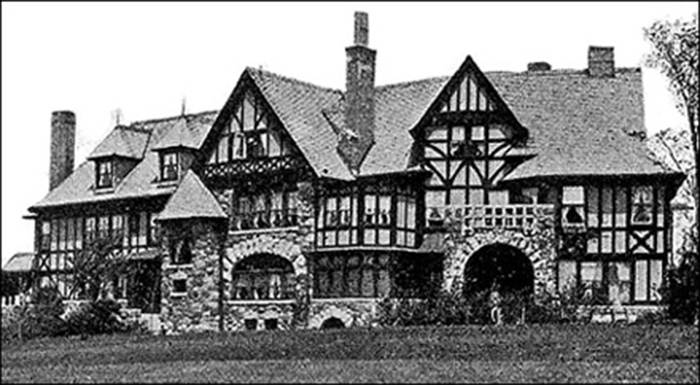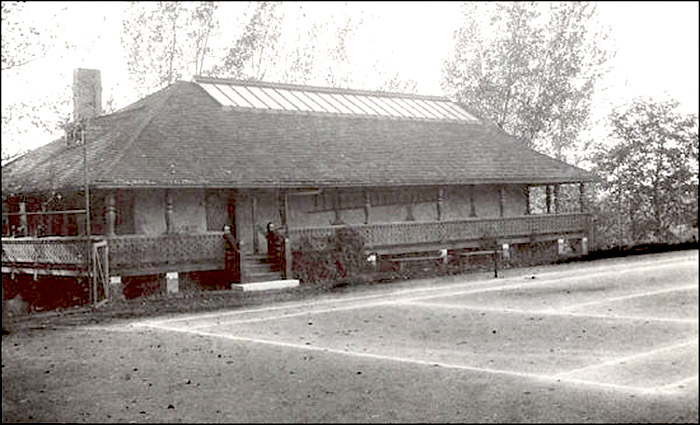Upland Farm on Orchard Road
The pictured mansion no longer exists, though other buildings that were part of the Hazard Estate remain and are visible along North Orchard Road and one of them seems almost large and impressive enough to have served as the estate's centerpiece. The Hazard mansion (above), was designed by nationally known architect Joseph Lyman Silsbee (1848–1913), but was demolished about 1940.
Rowland Hazard II, a wealthy Rhode Island industrialist, was the primary investor in the Solvay Process Company that was proposed by William B. Cogswell in the late 1800s. Cogswell had been a mining engineer for one of the Hazard businesses. He was the driving force in convincing Ernest and Alfred Solvay of Belgium to agree to a joint venture to establish an American chemical company that would utilize the Solvay process in the manufacture of soda ash, which was used by companies throughout the United States and previously had been imported from Europe.
Rowland Hazard II became the Solvay company's first president. His son, Frederick Rowland Hazard, later held the same title, and Frederick's brother, Rowland G. Hazard, served many years as vice president.
Caroline Hazard, sister of Frederick Hazard, was an author, artist, and president of Wellesley College, 1899–1910.
In 1890 the Hazards built Guild Hall at the Solvay Process Company to serve as a community center. It also provided the first public library facility. Guild Hall was one of five buildings constructed for health and recreational use of the community.
The village's Piercefield section was developed as Upland Farm, the Hazard estate. By the 1940s, when I was a young boy in Solvay, the big house was gone, of course, but most of my friends were oblivious to that fact because what remained included such a large house that we assumed it was the original mansion. As I recall, the Hagadorn family lived there. And at the intersection or North Orchard and West Genesee street was what was we referred to as the Hazard carriage house. A classmate, Patricia Guiditto, lived there for several years.
When I was about 10, a bunch of us from Russet Lane sneaked into what had been built as the Upland Farm Racket Court (below). Someone had put up a basketball backboard, which is the reason we paid a visit and played a half-court game. Later the building was converted into a house.
You can't download them, but there are several photos of Upland Farms on the Onondaga Historical Association website, http://www.cnyhistory.org. I believe these photos appear in books that can be purchased; I also believe the photographs can be purchased individually.


